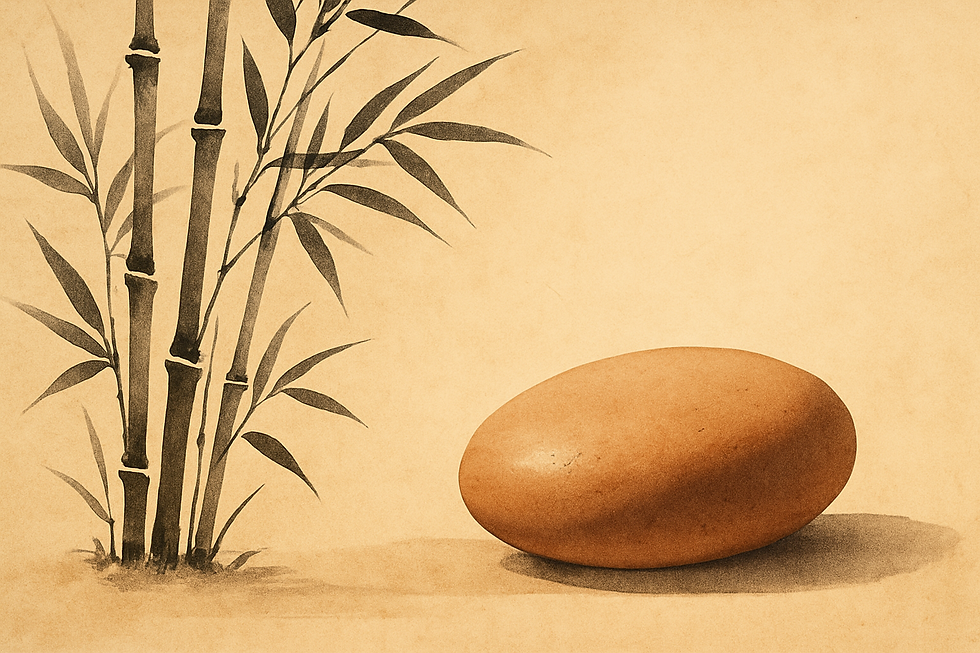The Stone That Had Neither a Past Nor a Future
- Ted Garcia
- Jul 7
- 2 min read
Updated: Jul 17
Hi there.
Welcome to The Noticing Stone™.
In a world that urges us to do more, be more, and chase what’s next,
this space offers something gently radical:
a pause.
A way to remember what we so often forget—
that this moment, just as it is,
is enough.
Today’s story comes from a Zen tradition of quiet teaching,
where simple things—like stones—reveal timeless truths.
---
A young monk arrived at the mountain temple seeking answers.
His mind was full of questions:
What is enlightenment?
When will I attain it?
How do I know I’m on the right path?
The old master didn’t speak.
Instead, he handed the monk a small, smooth stone.
“Is this a sacred stone?” the monk asked.
The master shook his head.
“It had neither past nor future,” he said.
“It only rests in your hand, now.”
The monk furrowed his brow.
“But how does it help me?”
The master gestured to the monk’s clenched hand.
“You are holding it,
but are you noticing it?”
The monk loosened his grip.
He felt the cool weight of the stone.
Its quiet stillness.
Its simple presence.
For a moment,
his racing thoughts slowed.
The master nodded.
“This is the way.
The stone will not solve your questions.
But it will bring you back to where the answers live—
here.
Now.”
---
This is the practice we offer with The Noticing Stone™
Place the stone in your hand.
Feel it.
Breathe.
Notice your surroundings,
your body,
your breath—
your life.
That is enough.
---
And science agrees.
Modern neuroscience echoes what Zen teachers have long known:
mindfulness brings us back from distraction.
Research shows that tactile grounding—
holding a physical object like a stone—
can interrupt stress patterns,
engage the parasympathetic nervous system,
and improve emotional regulation.
Studies by Dr. Andrea Grabovac and colleagues
describe how mindfulness activates brain regions
linked to clarity and presence—
like the prefrontal cortex and insula.
And work by Yi-Yuan Tang and Michael Posner
shows that even brief mindfulness practice
can reduce activity in the amygdala,
our brain’s stress alarm system.
All from noticing.
No past.
No future.
Just—now.
Thanks for listening.
Noticing Notes
• Grabovac, A. D., Lau, M. A., & Willett, B. R. (2011). Mechanisms of Mindfulness: A Buddhist Psychological Model. Read the full paper
• Tang, Y. Y., Hölzel, B. K., & Posner, M. I. (2015). The Neuroscience of Mindfulness Meditation. Nature Reviews Neuroscience






Comments